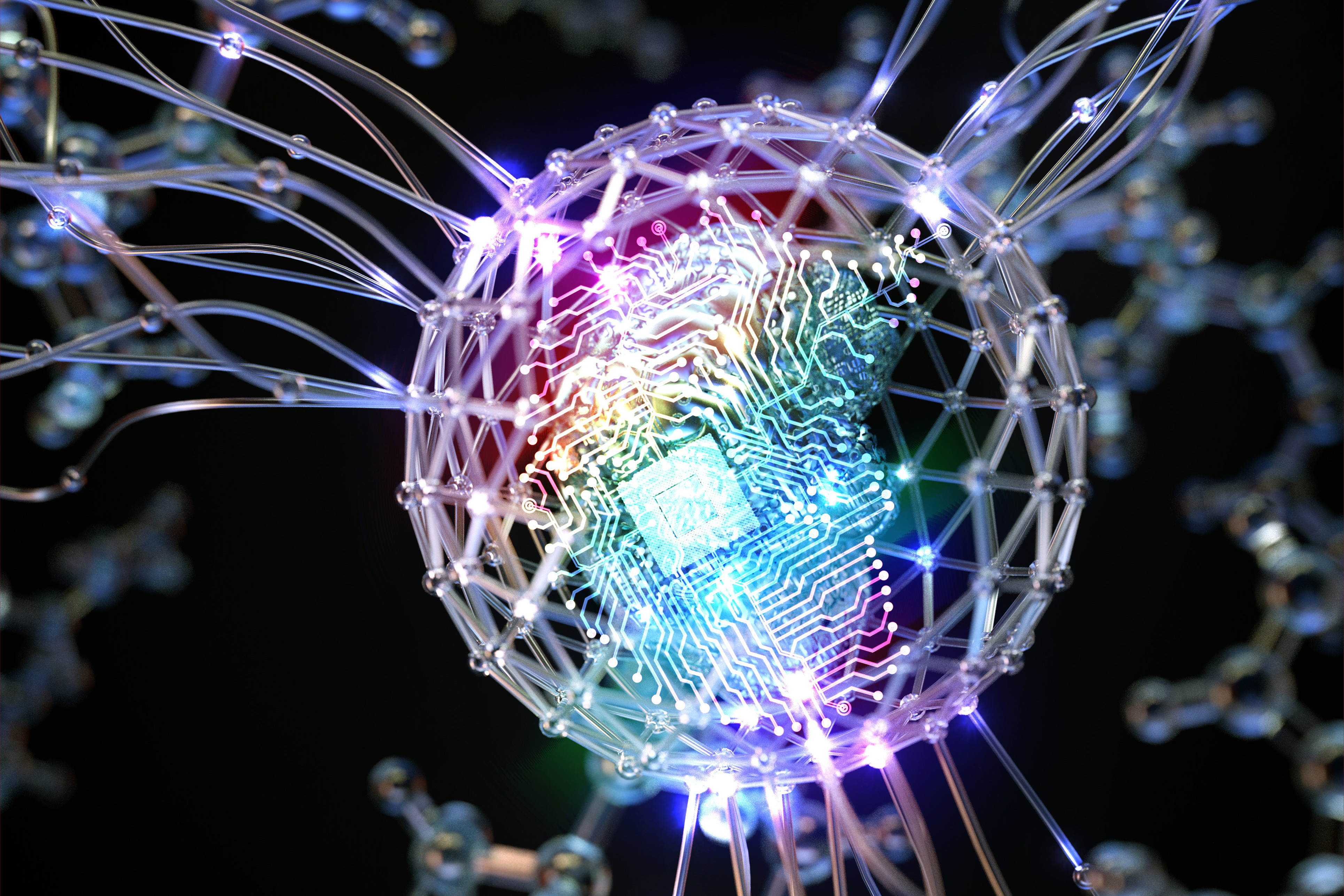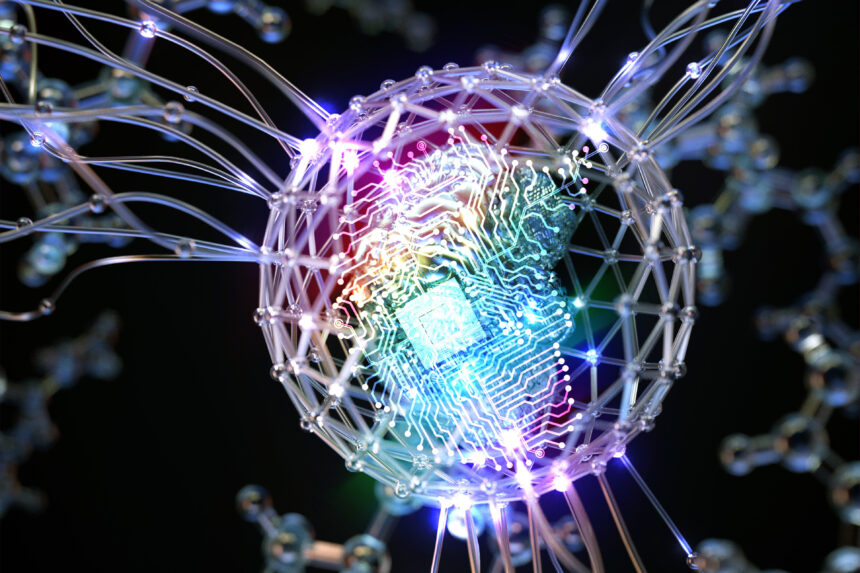
Manufacturing better batteries, faster electronics, and more effective pharmaceuticals depends on the discovery of new materials and the verification of their quality. Artificial intelligence is helping with the former, with tools that comb through catalogs of materials to quickly tag promising candidates.
But once a material is made, verifying its quality still involves scanning it with specialized instruments to validate its performance — an expensive and time-consuming step that can hold up the development and distribution of new technologies.
Now, a new AI tool developed by MIT engineers could help clear the quality-control bottleneck, offering a faster and cheaper option for certain materials-driven industries.
In a study appearing today in the journal Matter, the researchers present “SpectroGen,” a generative AI tool that turbocharges scanning capabilities by serving as a virtual spectrometer. The tool takes in “spectra,” or measurements of a material in one scanning modality, such as infrared, and generates what that material’s spectra would look like if it were scanned in an entirely different modality, such as X-ray. The AI-generated spectral results match, with 99 percent accuracy, the results obtained from physically scanning the material with the new instrument.
Certain spectroscopic modalities reveal specific properties in a material: Infrared reveals a material’s molecular groups, while X-ray diffraction visualizes the material’s crystal structures, and Raman scattering illuminates a material’s molecular vibrations. Each of these properties is essential in gauging a material’s quality and typically requires tedious workflows on multiple expensive and distinct instruments to measure.
With SpectroGen, the researchers envision that a diversity of measurements can be made using a single and cheaper physical scope. For instance, a manufacturing line could carry out quality control of materials by scanning them with a single infrared camera. Those infrared spectra could then be fed into SpectroGen to automatically generate the material’s X-ray spectra, without the factory having to house and operate a separate, often more expensive X-ray-scanning laboratory.
The new AI tool generates spectra in less than one minute, a thousand times faster compared to traditional approaches that can take several hours to days to measure and validate.
“We think that you don’t have to do the physical measurements in all the modalities you need, but perhaps just in a single, simple, and cheap modality,” says study co-author Loza Tadesse, assistant professor of mechanical engineering at MIT. “Then you can use SpectroGen to generate the rest. And this could improve productivity, efficiency, and quality of manufacturing.”
The study’s lead author is former MIT postdoc Yanmin Zhu.
Beyond bonds
Tadesse’s interdisciplinary group at MIT pioneers technologies that advance human and planetary health, developing innovations for applications ranging from rapid disease diagnostics to sustainable agriculture.
“Diagnosing diseases, and material analysis in general, usually involves scanning samples and collecting spectra in different modalities, with different instruments that are bulky and expensive and that you might not all find in one lab,” Tadesse says. “So, we were brainstorming about how to miniaturize all this equipment and how to streamline the experimental pipeline.”
Zhu noted the increasing use of generative AI tools for discovering new materials and drug candidates, and wondered whether AI could also be harnessed to generate spectral data. In other words, could AI act as a virtual spectrometer?
A spectroscope probes a material’s properties by sending light of a certain wavelength into the material. That light causes molecular bonds in the material to vibrate in ways that scatter the light back out to the scope, where the light is recorded as a pattern of waves, or spectra, that can then be read as a signature of the material’s structure.
For AI to generate spectral data, the conventional approach would involve training an algorithm to recognize connections between physical atoms and features in a material, and the spectra they produce. Given the complexity of molecular structures within just one material, Tadesse says such an approach can quickly become intractable.
“Doing this even for just one material is impossible,” she says. “So, we thought, is there another way to interpret spectra?”
The team found an answer with math. They realized that a spectral pattern, which is a sequence of waveforms, can be represented mathematically. For instance, a spectrum that contains a series of bell curves is known as a “Gaussian” distribution, which is associated with a certain mathematical expression, compared to a series of narrower waves, known as a “Lorentzian” distribution, that is described by a separate, distinct algorithm. And as it turns out, for most materials infrared spectra characteristically contain more Lorentzian waveforms, while Raman spectra are more Gaussian, and X-ray spectra is a mix of the two.
Tadesse and Zhu worked this mathematical interpretation of spectral data into an algorithm that they then incorporated into a generative AI model.
“It’s a physics-savvy generative AI that understands what spectra are,” Tadesse says. “And the key novelty is, we interpreted spectra not as how it comes about from chemicals and bonds, but that it is actually math — curves and graphs, which an AI tool can understand and interpret.”
Data co-pilot
The team demonstrated their SpectroGen AI tool on a large, publicly available dataset of over 6,000 mineral samples. Each sample includes information on the mineral’s properties, such as its elemental composition and crystal structure. Many samples in the dataset also include spectral data in different modalities, such as X-ray, Raman, and infrared. Of these samples, the team fed several hundred to SpectroGen, in a process that trained the AI tool, also known as a neural network, to learn correlations between a mineral’s different spectral modalities. This training enabled SpectroGen to take in spectra of a material in one modality, such as in infrared, and generate what a spectra in a totally different modality, such as X-ray, should look like.
Once they trained the AI tool, the researchers fed SpectroGen spectra from a mineral in the dataset that was not included in the training process. They asked the tool to generate a spectra in a different modality, based on this “new” spectra. The AI-generated spectra, they found, was a close match to the mineral’s real spectra, which was originally recorded by a physical instrument. The researchers carried out similar tests with a number of other minerals and found that the AI tool quickly generated spectra, with 99 percent correlation.
“We can feed spectral data into the network and can get another totally different kind of spectral data, with very high accuracy, in less than a minute,” Zhu says.
The team says that SpectroGen can generate spectra for any type of mineral. In a manufacturing setting, for instance, mineral-based materials that are used to make semiconductors and battery technologies could first be quickly scanned by an infrared laser. The spectra from this infrared scanning could be fed into SpectroGen, which would then generate a spectra in X-ray, which operators or a multiagent AI platform can check to assess the material’s quality.
“I think of it as having an agent or co-pilot, supporting researchers, technicians, pipelines and industry,” Tadesse says. “We plan to customize this for different industries’ needs.”
The team is exploring ways to adapt the AI tool for disease diagnostics, and for agricultural monitoring through an upcoming project funded by Google. Tadesse is also advancing the technology to the field through a new startup and envisions making SpectroGen available for a wide range of sectors, from pharmaceuticals to semiconductors to defense.










